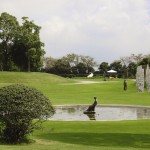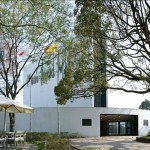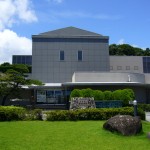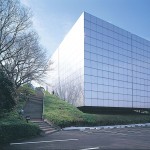リストランテ プリマヴェーラRistorante Primavera
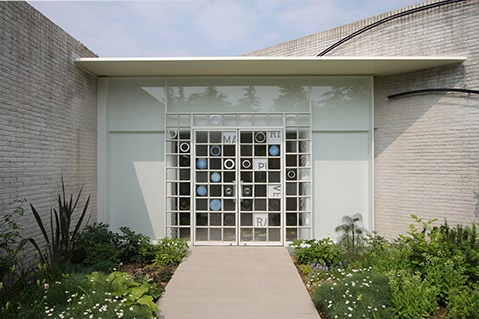
© Ristorante Primavera
The windows at Ristorante Primavera, a part of Clematis no Oka, can open to make this eatery more pleasant than a terrace restaurant. From these windows, verdurous trees are visible as far as can be seenクレマチスの丘にある「リストランテ プリマヴェーラ」は、テーブル席の壁面がすべてオープンウィンドウになる、テラス以上に気持ちいいレストランだ。窓からは新緑の美しい木々が視界いっぱいに広がり、爽やかな風と緑の香り、野鳥の声が、軽井沢にでもいるかのような趣きで、遠くには市街や伊豆箱根の山々が連なるのが見える。もともとシチリアで修行していたという黒羽徹シェフは、世界一予約がとれないと噂される「エル・ブリ」で修行した経歴も合わせ持つ異色のシェフだ。
![]()
でも誤解しないで欲しい。残念ながら、ここではエル・ブリのような世界最先端の調理法の料理が食べられるわけではない。地元食材を研究し、『究極のこだわりは素材を自分で育てる以外にないでしょう』と話す黒羽シェフは、お店から十数分の場所に自分の畑を持っている。東京のレストランと一番異なる点は、「リストランテ プリマヴェーラ」を取り囲む豊かな自然環境と、素材へのこだわりの度合いなんだと話してくれた。
![]()
『緑と風があるかないかで料理の味も、食べるときの気持ちも違う。何より、香りが違う。雨が降った時なんかもっと香りが引き立つ。濡れて、緑の香りが立ちこめる。だから必ずハーブを入れたり、ひとつひとつの料理にこれは柑橘系の香り、ミントの香り、畑の香りというようにデザートまで意識してこだわっています。香りのもと、香草を自分で育てているんですけど、こだわるところといったら育てるところしかないですよ。東京でできないのは何かと言えば、例えば、人参だと東京では1箇所しか仕入れないと思うんですけど、うちは3〜4軒仕入れ先がある中で、全部が土壌の質、土質が違うんですね。ここでできる野菜はどうしても水分が少ないんだけど味が濃い。ここは水分が多いけどすごく甘い。これは完全無農薬、これは減農薬だと。そういう中で、それぞれの人参の絶対的に合う調理法で、これはここを蒸した方がいい、これは焼こうとか、農家さんを使い分ける。野菜を使い分けるんじゃなくて。そこまで東京では契約農家を持てないはずだから。』(黒羽シェフ)。
![]()
そのこだわりは野菜の管理方法にまで徹底されている。4℃で採り、4℃で保管し、4℃で運んでくる。温度差がないから味が変わらないのだそうだ。イチゴは冷蔵庫に入れた瞬間、糖度の上昇が止まるので、冷蔵庫に入れず糖度を管理。1週間に3回は農家に出掛け、保存させる前に使い切る。そして、新しい調理法や化学的技法を使わなくても人の脳裏に焼き付けられるような料理を目指しているのが、かつてエル・ブリで学び、静岡の自然の素晴らしさを活かしたイタリアンを日々研究する「リストランテ プリマヴェーラ」なのだ。メニューは野菜の収穫期に合わせて、魚介との比率や、エル・ブリのような驚きのある一皿もコースの中でメリハリをつけ、エッセンスとして構成している。
![]()
コース中心の少し高めの価格設定だが、東京よりも2〜3皿多めに構成され、何よりボリュームがあるので充実感は十分堪能できるだろう。自家製のパンは内浦のレモンを練り込んだものなど、何種類ものパンをサービスしてくれる。その時々で採れる地元の素材をパンを通してもアピールしているのだ。料理を通して、静岡の食の広報活動をしているようなレストランは、三嶋りつ恵の作品展示やBACHによるイタリア関連のブックライブラリーも揃う自然とアートが融合したようなレストランでもある。
![]()
リストランテ プリマヴェーラ
住所:静岡県長泉町東野クレマチスの丘(スルガ平)347-1
営業時間:11:00〜15:00(L.O.14:00)/ 17:30〜22:00(L.O.21:00)
定休日:水曜定休(祝日の場合はその翌日)
TEL:055-989-8788(コミュニケーションセンター)
http://www.clematis-no-oka.co.jp
![]()
Text: mina. A refreshing breeze and the smell of fresh greens blow in along with the sounds of wild birds blow in through the open windows. All these senses come together to make you feel like you are in Karuizawa. In the distance, you can see the city and mountains of Izu and Hakone. Past these soothing surroundings the food is exquisite. The chef of this restaurant, Toru Kuroha, apprenticed in Sicily, and also trained at elBulli (known as the hardest restaurant in the world to get a reservation).
![]()
But Mr. Kuroha’s background should not mislead you; Ristorante Primavera does not serve the conceptual recipes that are elBulli’s specialty. Chef Kuroha’s focus is locally available ingredients. Embodying this belief he owns a farm 10 minutes away from the restaurant, because “the ultimate commitment in cooking is growing your own ingredients.” He explains that the biggest difference between Ristorante Primavera and a restaurant in Tokyo is the surrounding wilderness and the attention paid to ingredients.
![]()
“The presence of greenery and the blowing wind affect how a dish tastes, and even how we feel when we eat. Most of all, it smells different. The smell is drawn out particularly after it rains. With the dampness, the green smell pervades all over. That’s why I add herbs, or add a citrus scent for a specific dish, a mint scent to another dish, and the fresh farm scent for another. I am conscious about the aroma for each dish and even the desserts. The root of these scents is herbs, which I grow myself. The only way I can pay particular care to these herbs is if I grown them. In Tokyo, I would probably get carrots from one place. Here, I have 3 to 4 sources for carrots, and they all have different soil qualities. I would not be able to do this in Tokyo. One vegetable would be drier, but very flavorful. Another one would be very succulent and sweet. One would be completely organic while another uses limited agrichemicals. Each carrot would have a suitable way of being cooked. One might be steamed and another roasted. I pick and choose my farmers; I don’t differentiate between the vegetables. To have such contract farmers would not be possible in Tokyo.” (Chef Kuroha).
![]()
Chef Kuroha’s special care extends to how vegetables are stored. They are picked and gathered at 4 degrees, stored at 4 degrees, and transported at 4 degrees. The constancy in temperature is said to keep the taste from changing. Strawberries’ sugar contents drop as soon as they are placed in low temperatures, so their sugar content levels are maintained by not refrigerating them. He visits farms at least 3 times a week, so ingredients are used before they need to be stored. Ristorante Primavera strives to create recipes that will impress diners without relying on new cooking techniques or uses of chemicals. Building on the chef’s training at elBulli and incorporating Shizuoka’s natural benefits, the restaurant continues to improve its Italian dishes. The menu alters depending on the season’s vegetables and the ratio of seafood, and it also adds surprise dishes into its courses like at elBulli.
![]()
The prices, based mainly around the set course meals, are a bit on the high end. But the courses here offer 2 to 3 more dishes than those in Tokyo, and portions are big enough to leave you more than satisfied. They offer a variety of complementary homemade breads including ones with freshly squeezed lemon from Uchiura. Their breads are a way for the restaurant to present seasonal local ingredients. Through their cooking, Ristorante Primavera is able to offer Shizuoka’s cuisines. In addition, this restaurant is a fusion of nature and art with works by Ritsue Mishima and the Italy-related library collection by BACH. The attention to detail at Ristorante Primavera is astonishing, extending to every aspect of the diners experience.
![]()
Ristorante Primavera
Address: 347-1 Clematis-no-oka, Nagaizumi-cho, Shizuoka
Opening Hours: 11:00-15:00 (L.O.14:00) / 17:30-22:00 (L.O.21:00)
Closed on Wednesday
Tel: 055-989-8788
http://www.clematis-no-oka.co.jp
![]()
Text: mina
Translation: Makiko Arima餐厅 普里马韦拉
住所:静岡県長泉町東野克莱默蒂斯的丘347-1
开放时间:11:00-15:00 (L.O.14:00) / 17:30-22:00 (L.O.21:00)
定期假日:星期三
电话:055-989-8787(代表)
http://www.clematis-no-oka.co.jp
